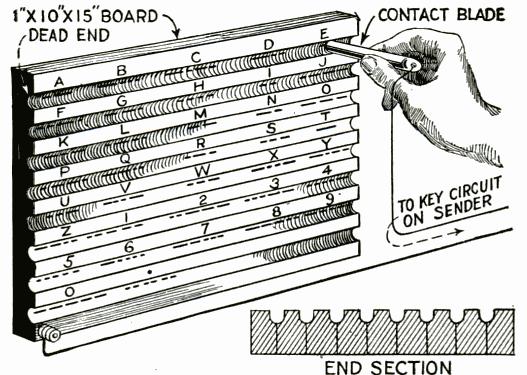Ninety years ago, the January 1926 issue of Popular Mechanics showed this simple but ingenious device for practicing code. It allowed the aspiring radio operator a way to generate perfect code with a buzzer.
The board (preferably oak or ash) had a series of grooves. At the beginning and end of each dot and dash a hole was drilled. Copper wire was threaded up through the holes, forming a conductive path for each letter. The other contact was slid over the letter at any desired speed, forming perfect code.
The article noted that a similar device had been used in the early days of the telegraph, presumably allowing unskilled operators to send (but not receive) messages.
Click Here For Today’s Ripley’s Believe It Or Not Cartoon
![]()


Pingback: 1948 Scout Morse Signaling | OneTubeRadio.com